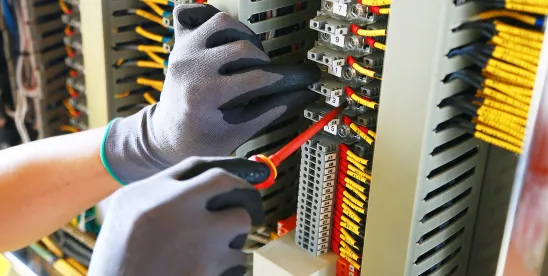In our ongoing series of blog posts, we have been examining several key negotiating points for tenants in triple net health care leases. We also have offered suggestions for certain lease provisions that will protect tenants from overreaching and unfair expenses, overly burdensome obligations, and ambiguous terms with respect to the rights and responsibilities of the parties. These suggestions are intended to result in efficient lease negotiations and favorable lease terms from a tenant’s perspective. In our previous blog posts, we considered the importance of negotiating initial terms and renewal terms, operating expense provisions, and assignment and subletting terms. This latest blog post focuses on negotiating maintenance, repair, and replacement obligations. These are key lease terms, which can result in significant expense to tenants if not drafted and negotiated with the goal of limiting a tenant’s exposure.
Landlords will often place responsibility for repairing, maintaining, and replacing mechanical systems that exclusively serve the leased premises on tenant. This includes HVAC, electrical, and plumbing systems, which can result in tenants spending a significant amount of money on system repairs which a tenant may not get the full benefit of if their lease is nearing the end of its term. Therefore, it is crucial for tenants to shift responsibility for such repairs onto the landlord, particularly with respect to replacements.
A good starting point for negotiation is for a tenant to have the mechanical systems exclusively serving the leased premises inspected prior to entering into the lease. Tenants should also seek a landlord representation in the lease that all such systems are in good working order and condition as of the lease commencement date. Tenants should further negotiate a warranty by landlord for a certain period of time following lease commencement. For example, a tenant may negotiate that if a major system requires repair or replacement during the first year of the term, the landlord will be fully responsible for all costs to repair or replace the system, and thereafter, tenant’s obligations for repair and replacement costs will be capped at a certain dollar amount per year or even that tenant’s responsibility for repairs will be capped and all replacements costs will be on the landlord. Language should also be included to clarify that a determination as to whether repair or replacement is needed will be determined by a mutually acceptable contractor. Tenants will likely be required to maintain service contracts for those mechanical systems exclusively serving the leased premises, which is reasonable. However, if the parties agree that the tenant will be responsible for all costs of repairs and replacements, a tenant should push for language in the lease that requires the landlord to assign any warranties, and for landlord to agree that tenant may enforce such warranties directly during the lease term.
Some health care tenants may require additional system capacity, such as additional HVAC units, emergency generators, or additional electricity capacity. Tenants should negotiate the installation of these types of requirements in the letter of intent so that the landlord has a clear picture of the tenant’s operational requirements in advance. Tenants do not want to get to the negotiation point of a lease only to have a landlord reject the installation of additional systems. Tenants will typically be responsible for any additional costs of repair, maintenance, and replacements of additional systems and for removal of such additional systems at expiration of the lease term.
By accepting delivery of leased premises, tenants typically accept the premises in an as-is condition, unless expressly stated otherwise. Therefore, it is important to include a carve-out for latent defects in or affecting the premises which may not be discovered until after lease commencement. For example, mold not readily detectable upon visual inspection may be discovered at some point during the term or during the course of any tenant work. Language should be included in the lease that such latent defects will be remediated at landlord’s sole cost and expense.
Maintenance, repair, and replacement of foundations, walls, and other structural components of the building, parking lots, sidewalks, and roofs are most often the landlord’s responsibility. To the extent possible, a tenant should negotiate affirmative language stating that such costs will not be passed through to the tenant as operating expenses, particularly in a single tenant building where all such costs would fall on one tenant. Mechanical systems that jointly serve the leased premises and other parts of the building or common areas, are customarily passed through as operating expenses as well, which is why negotiating limitations on operating expenses and amortization of any capital improvements included in operating expenses is so important (as discussed in our prior blog post).
Negotiation of maintenance, repair, and replacement obligations is essential in order to protect tenants. Tenants should consider the term of their lease, and the potential for repairs and replacements to major systems which could result in significant costs and burdensome obligations. As with other key lease terms, responsibility of the parties for maintenance, repairs, and replacements to the leased premises should be set out in detail in a letter of intent in order to make expectations of the parties clear, to save time and money by avoiding protracted negotiations, and to achieve an overall efficient lease negotiation process for both parties.
In our next post, we will discuss the importance of negotiating holdover provisions and will offer suggestions for allowing flexibility for tenants and limiting expenses.




 />i
/>i

